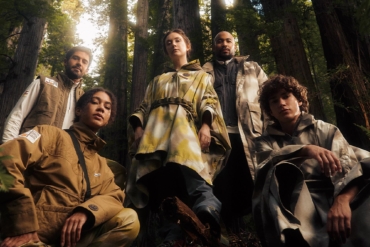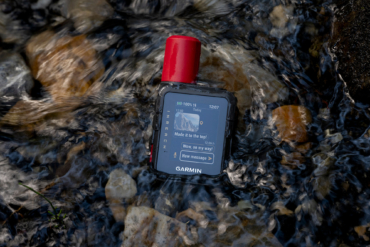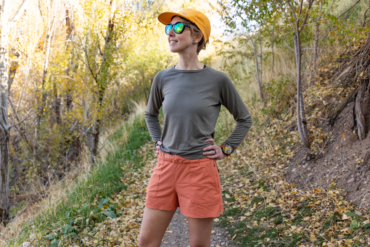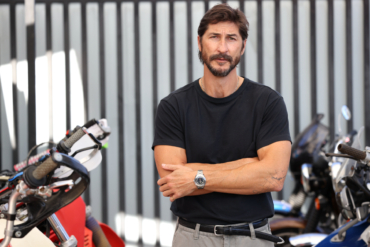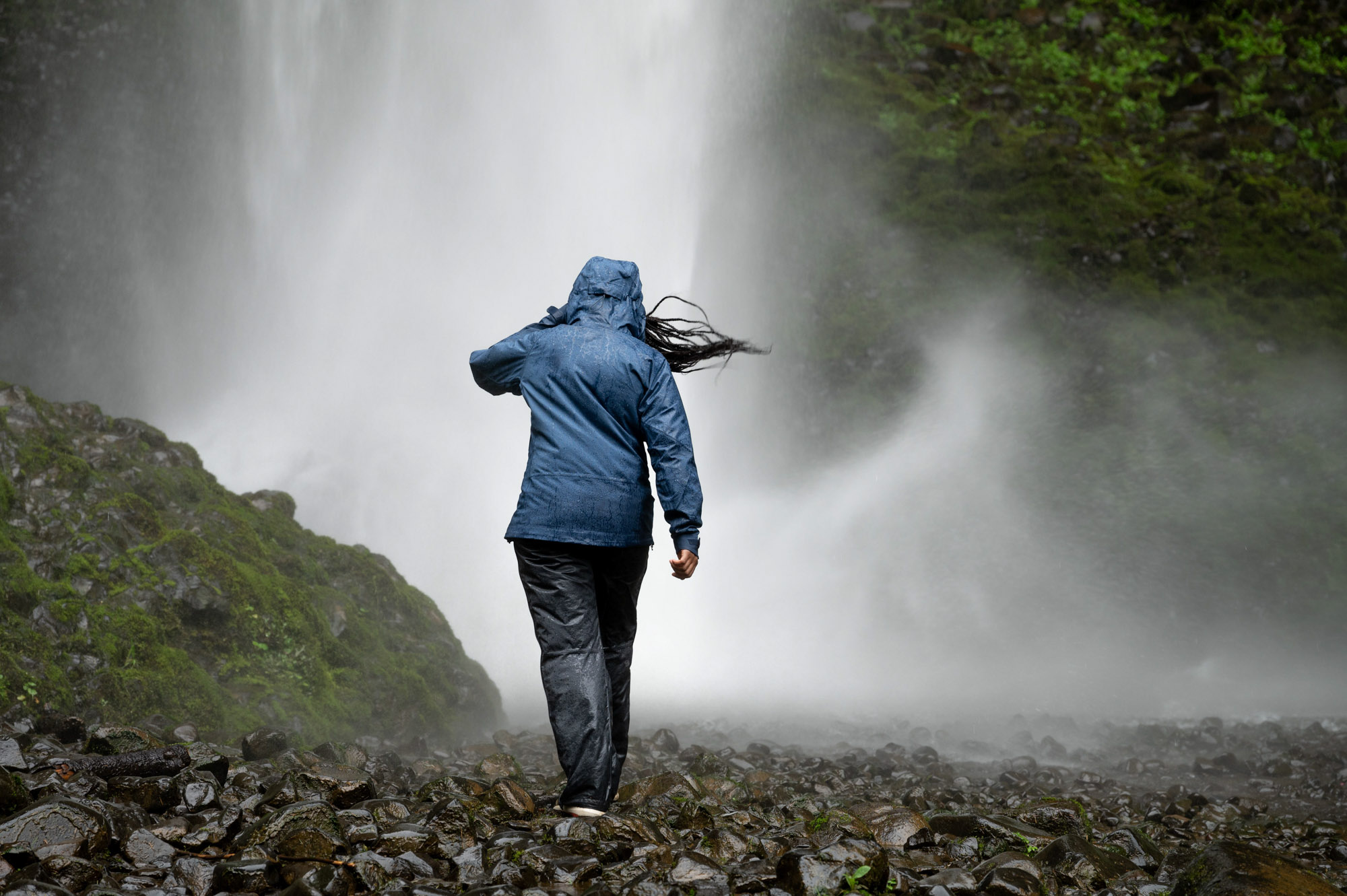The perfect union of hot weather and sweat meets its match. Columbia’s new cooling technology makes salty, drenched shirts desireable.
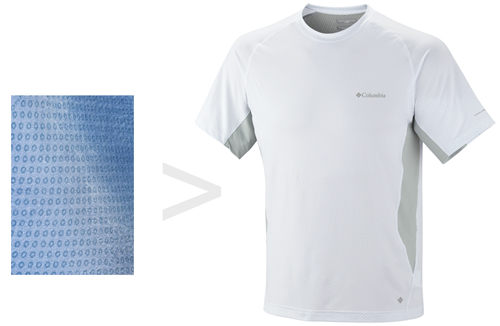
Glowing walls of sandstone tower over and surround Sedona, Arizona. Cults gather here and New Age believers hike the hills in search of spiritual vortexes rumored to exist above the town. It only follows the high-desert outpost is famous for the metaphysical effect it has on people
It was on the outskirts of Sedona this weekend that Columbia Sportswear and its subsidiary brand Mountain Hardwear gathered a group of journalists for an open-air press conference at a ranch.
Cooling Fabric Technology Debut
The occasion was a New Age announcement of sorts, a fabric technology purported to offer “a whole new category of clothing”. Supposedly, sweat-activated cooling properties will “improve the way people live around the world.”
Those quotes belong to Mick McCormick, a VP at Columbia, who stood on stage under the desert stars. He gestured to graphs and images of athletes sweating on a slide. “The world is hot and getting hotter, forget your politics.”

But the night’s news had little to do with climate change. Trail runners and hot weather hikers concerned Columbia and Mountain Hardwear more. For the first time, they teamed up to co-launch a technology used in both brands.
The magic stuff is Omni-Freeze ZERO from Columbia and Cool.Q Zero from Mountain Hardwear. Within the clothing, tiny donut shape accents laminated on polyester “suck, swell, and expel” as an athlete sweats and cools in return.
High secrecy surrounded the sucking/swelling donut shapes on the to-be-released clothing. But Woody Blackford, an executive who focuses on product development, told me the polymer comes from a product used in industrial water filtration processes. (That is all he would say.)
Omni-Freez ZERO Technology Explained
Unlike Columbia’s launch of cooling clothing last year, which was based on an endothermic reaction that issued a cooling effect, the new stuff for next season employs a “mechanical” reaction as opposed to a chemical one. Blackford said, “There is a latent heat absorption that sets it apart.”
Essentially, as Blackford explains it, the donut shapes suck up sweat and then react to the moisture. On a molecular level, things stir around and jingle in the polymer donuts to a point where the resulting reaction pulls heat from your skin. In addition, the sweat-filled donuts also aid in wicking sweat, Blackford continued, adding extra cooling via evaporative effect.
Next Year Columbia and Mountain Hardwear Hit the Market
Columbia and Mountain Hardwear plan to make many products for next year with the polymer donut technology built in, including polyester-based running shirts, arm wraps, shoes, shorts, hats, and handkerchiefs. Columbia’s McCormick believes the resulting product crush will be so influential that Nike, Under Armor, other athletic apparel giants, and outdoor brands will be left in the dust. “Athletic apparel has been pretty much unchanged in a lot of ways since the 1970s,” he said. “Omni-Freeze ZERO is a huge paradigm shift.”
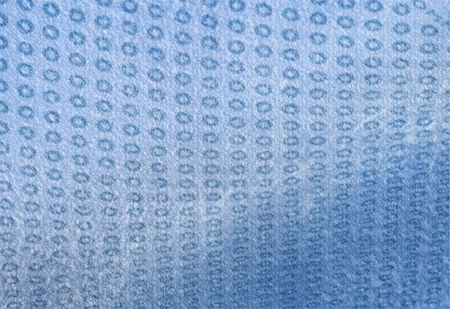
McCormick is a passionate guy about his company and is known for his stage drama. I tried out an arm sleeve at the Sedona conference and can say the effect of Omni-Freeze ZERO is immediately noticeable once sprayed with water. True enough, air felt cooler on my skin.
Tomorrow we head into the desert to try out Omni-Freeze ZERO and Cool.Q ZERO products in their intended setting. The weather looks sunny with temps pushing past 90 degrees. Sounds perfect for testing clothing that’s purportedly “activated” and cooled by sweat. I just hope the vortexes above town do not interfere with our results.
Review: Mountain Hardwear Cool.Q ZERO
I ran 17 miles today through the desert on a tough trail in clothing made from this material. I wore the Mountain Hardwear version and my first impression was good!
It’s a slick formula. I noticed the cooling effect, especially in the wind. In fact, I find the shirts top notch for running-wear in general — comfy and highly wicking.
Also, unlike last year’s launch of a similar line by Columbia, these ones can get wet, wick and dry, and then produce the “cooling effect” again and again all in the span of a single outing. It was sunny, dry, and in the 80s on our desert run today. In the future, I look forward to testing the shirts in more humid climate.
It was sunny, dry, and in the 80s on our desert run today. I look forward to testing the shirts in more humid climates, but was impressed today on this first real test. Stay tuned for a detailed blog post soon.

